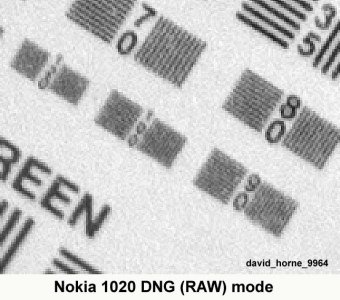I've done a good deal of testing with the 1020. Shown is a resolution test with the 1020 in DNG mode. I judge the resolution at 100 LP/mm ( 35mm equivalent ). For comparison, my 14MP Sigma only makes it to about 50. My friends 20MP Canon earns about 65. 35mm color print film maxes out at about 85 and Tech Pan, 120. I use my 1020 in JEPG mode which yields about 90 but is considerably faster and less noisy than DNG mode. All these tests are " apples to apples ". In other words, the test chart fits the frame on all devices. Please comment if you would like to see more test results.



